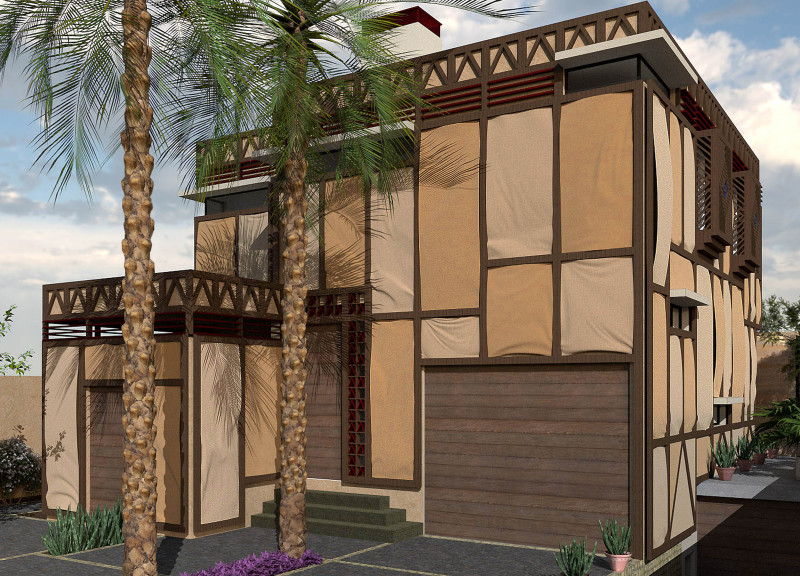5 key facts about this project
### Architectural Report: Re-Dubai House
#### Overview
Located in Dubai, UAE, the Re-Dubai House is a contemporary residential structure that integrates local heritage with modern sustainability practices. The design draws inspiration from the nomadic traditions of desert dwellers and the aesthetics of Middle Eastern architecture, establishing a connection to cultural values while addressing contemporary living needs. The project prioritizes functionality and ecological responsibility, employing innovative materials and technologies to create a unique architectural identity.
#### Spatial Strategy
The layout of the Re-Dubai House is organized across multiple levels to enhance the interaction between indoor and outdoor environments. The ground floor includes key living areas such as the living room, dining space, and kitchen, which are interconnected with landscaped gardens to facilitate a natural flow. Private spaces are designated to the second level, allowing for privacy while maintaining connectivity. An additional lower floor includes a basement that adds functional space without detracting from the overall design, thereby promoting a balanced relationship between the residence and its surroundings.
#### Materiality and Sustainability
The choice of materials in the Re-Dubai House reflects a commitment to sustainability and local traditions. Recovered construction wood, salvaged from previous structures, offers an environmentally friendly option while reinforcing cultural narratives. The use of rammed earth contributes to thermal mass and insulation, essential for moderating the interior climate in Dubai's heat. Innovative materials such as compressed straw board (Ekopanel) provide lightweight insulation, while perforated metal sheets on the façade enhance ventilation and control sunlight. Moreover, solar panels are installed to harness renewable energy, supported by a water treatment plant that recycles greywater, further minimizing ecological impact. These features underscore a holistic approach to sustainable living within the design.






















































